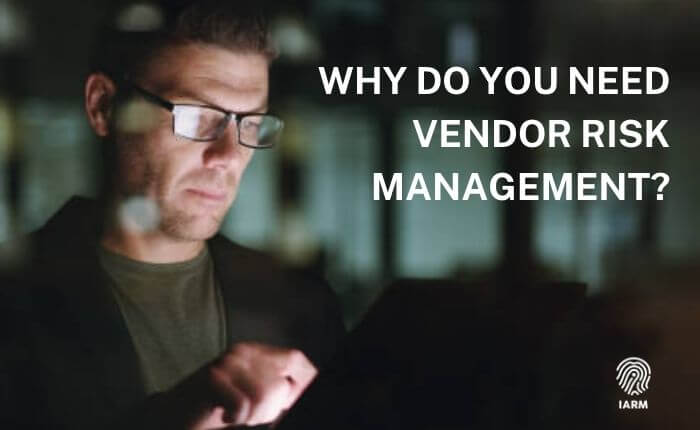USA: +1 (551) 242-2980 | India: 1800 102 1532 (Toll Free)
Risk management strategies are a core component of any successful business. All it takes is one mistake to put extremely sensitive information out there for the world to see.

Vendor risk management is a critical investment when it comes to conducting business. While collaboration is an essential part of any success story, you want to make sure it’s with the right people.
You need vendor risk management in order to propel your business forward. We’ll take a detailed look at this below so you can make smarter — and safer — investments.
Let’s get the confusing part out of the way now: vendor, third-party, and supplier are usually under the same umbrella. They’re professional entities that assist you with business operations without being classified as part of your business.
A trustworthy vendor can give your business a competitive edge in a crowded market. On the other hand, a shady vendor can expose you to harmful data breaches and even harm your reputation. Vendor risk management is the buffer between you and several months of clean-up.
There’s no one-size-fits-all when it comes to cybersecurity. You need a customized vendor risk management plan. Visit IARM to see how we can protect your business from cyber attacks today.
Did you know nearly 55% of digital attacks were from phishing emails? When even the most simple form of hacking is causing trouble, you know you need to improve your risk management strategy.
Vendor risk management protects you from the day-to-day harm constantly threatening to damage your business reputation. These include (but aren’t limited to):
Related: Database Security Audit
Your vendor risk management program is like a shield against a battering ram. Any good shield should protect you and the people around you.
A good vendor risk management program will include basic toolsets and protections such as:
An effectively (and consistently) executed risk management program needs to provide your business with benefits such as:
Do you want your business to be a victim of a cyber attack? Do you have an effective security plan in place before any attack can happen? IARM empowers businesses to find the weak spots in their risk management strategy so they can stay protected.
You’re likely wondering how you begin with a vendor risk management program. Just like any other mitigation technique, it’s easy to get started once you put a framework in place.
The reason you run a business is that you know your industry well. You likely already have an idea of which vendors you’d like to hire. Make a list of the vendors you’re interested in, especially if they’ve already been recommended by trusted peers.
Likewise, make a list of vendors you are already working with and identify which vendors they are working with.
Understand exactly what risks you face, and get help protecting your business! Contact us today and see how IARM can protect you.
This step is the meat of any good vendor risk management system. Calculating a risk assessment is as simple as asking which vendors have access to your personal information.
Narrow this down so you can gauge which one might yield the biggest risk down the road.
Related: The Importance Of Security Checks During Vendor Risk Assessment
Your policy is a vital part of your risk management strategy, as it will let all parties know what to do when a crisis rears its ugly head. It needs to outline risks, mitigation measures, and assigned roles.
Technology evolves faster than we can keep up with. You need to update your vendor risk management strategy on a rolling basis to keep up with new threats.
Related: BCP Simplified! Easy To Understand Business Continuity Plan
Yes, even a risk management program can come with a risk. Every industry, from healthcare to media, has to be mindful of the efforts needed to execute risk management effectively.
Simply having this program in place isn’t enough. You need to consider actions such as:
Vendor risk management is a critical investment your business needs. It’s a proactive strategy that protects you from worst-case scenarios and lets you focus on what you do best.
Implementing an effective vendor risk management program means calculating risk, keeping track of your vendors, and putting an auditing procedure in place. The more often you update your strategy, the more prepared you are for a worst-case scenario.
Shield your business from phishing, hacking, and intellectual property theft! Contact IARM today to learn about your risk factors and what security tool is best for you.
Inquire Now